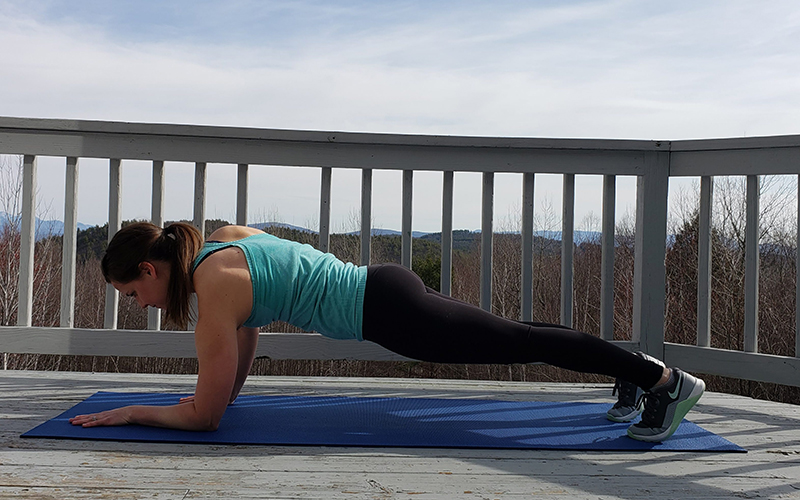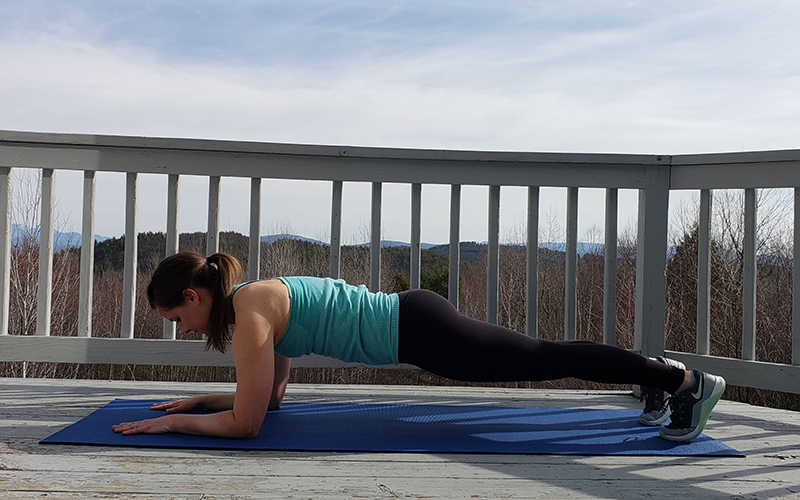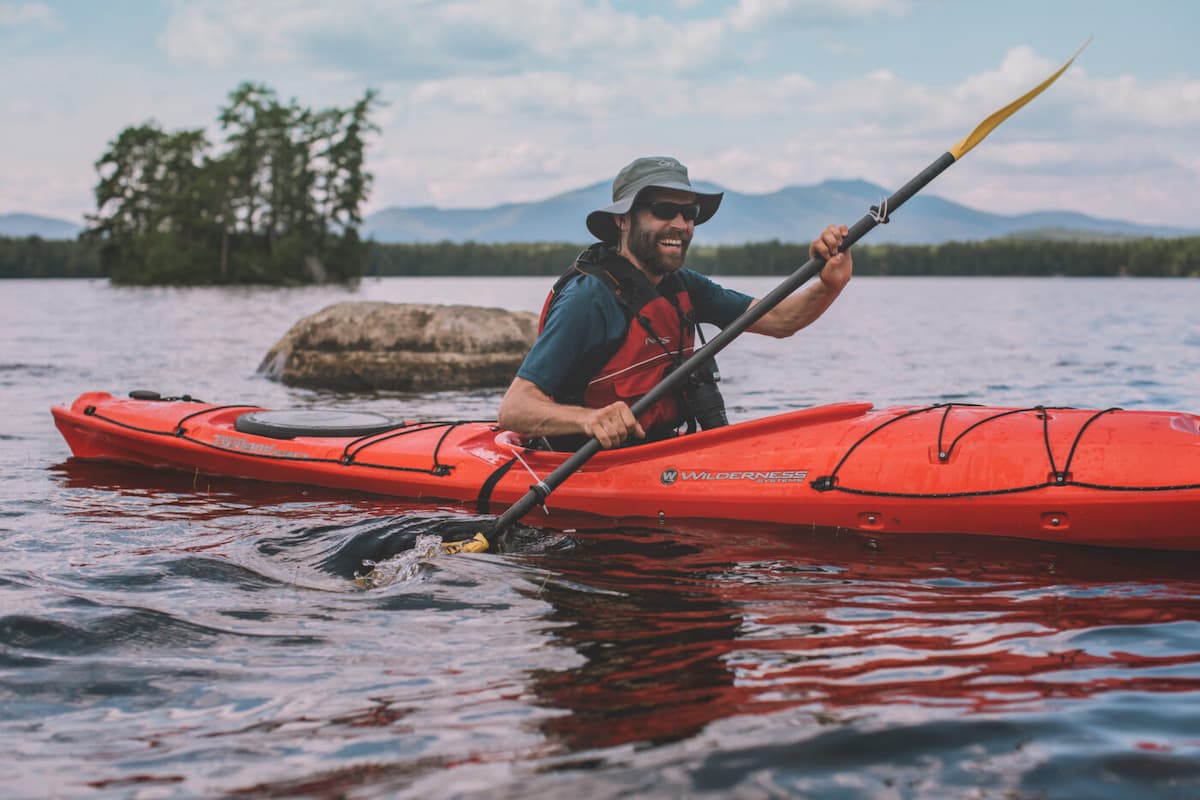
Here’s a paddling workout you can do in your living room or backyard, courtesy of Kathy Ellis, M.S.—a licensed personal trainer, certified yoga trainer, and volunteer Class 2 excursions leader with AMC’s New Hampshire chapter. Ellis has trained clients of all fitness levels in every setting, from private studios to corporations, and currently works as a health and corporate wellness consultant. She’s also an avid standup paddle boarder who loves exploring open water in New Hampshire’s Lakes Region.
“Goals for any paddling training program should focus on strengthening the core and increasing upper body strength, endurance, and flexibility,” Ellis says. “Lower body strength and stability is also an essential foundation. Being able to recruit the appropriate muscles needed for efficient paddling can reduce risk for injury and strain.”
Ellis has put together a paddling-specific, at-home strength and conditioning circuit. The best part? You don’t need much, if any, equipment, Ellis says.
“Many movements can be done with just your body weight or by getting creative with items around the house for added resistance,” she says. “Think gallon milk jugs. Full, they are about 8 to 9 pounds each and half-filled they’re about 5 pounds. Adjust the volume to match what resistance you are looking for.”
Disclaimer: Always consult your primary care provider before starting or increasing the intensity of exercise.
Recommendation: Complete 2-4 rounds of this circuit 2-3 times per week
Warm-up:
Be sure to warm up to get the blood flowing through the muscles for at least 5 minutes before starting the circuit with movements like walking around the house or going up and down stairs, if available. Range-of-motion exercises like arms circles, shoulder circles, controlled hip swings, shallow body weight squats and lunges are also great to help warm up the body.
1. Plank press / plank-ups 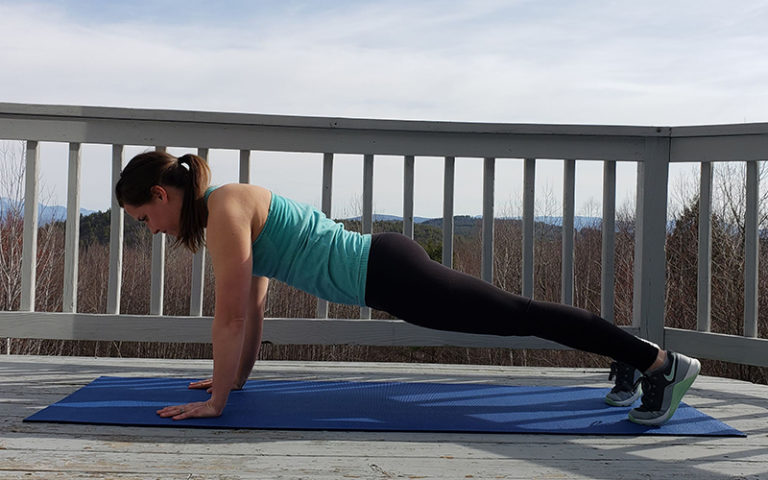
Muscles: core, arms, chest
Start in a high plank (top of a push-up) with the your fingers spread wide, hands under your shoulders, and your legs extended. Squeeze your thigh and glute muscles to engage your core and keep body and legs in a straight line, then lower down to the forearms one elbow at a time. From this position, press the hands into the floor one at a time to return to the staring position.
Equipment needed: Mat
Reps: 12
How it helps paddlers: This exercise works the chest and core at the same time. Though the back and shoulder muscles are often the focus of paddling, the chest muscles assist and also act as stabilizers throughout the paddling motion.
2. Prone scapular (shoulder) stabilization
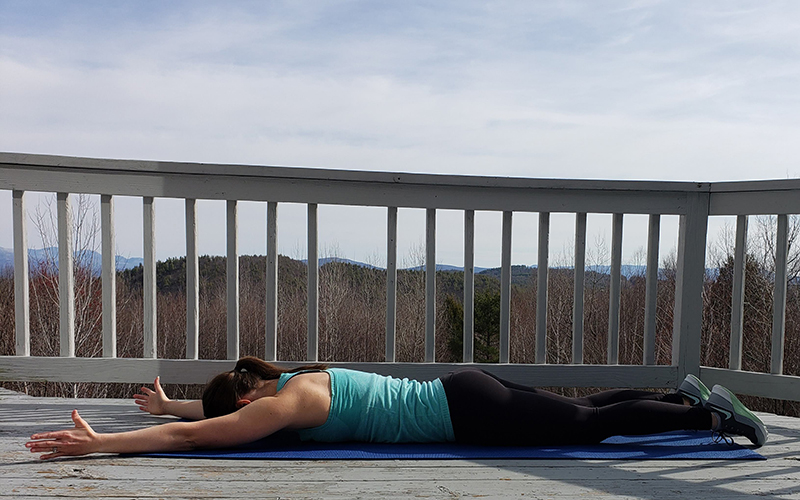
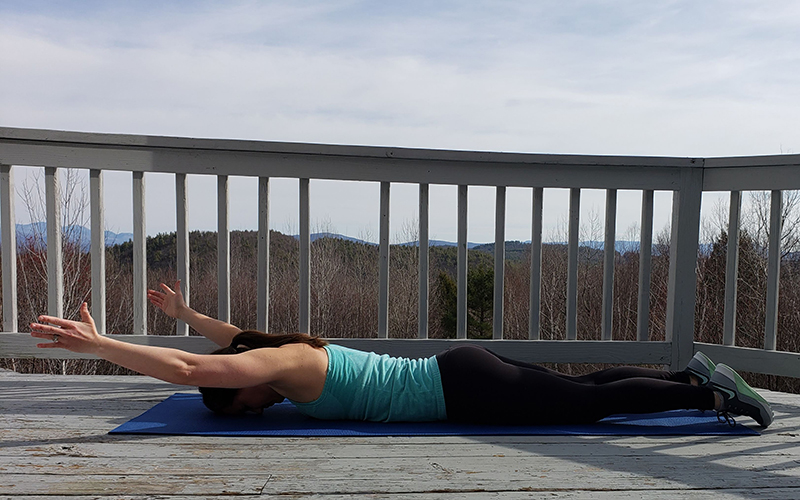
Muscles: shoulders, rhomboids
Lie on the floor face-down with your arms straight out above you, fully rested, with your thumbs up. Inhale, then as you exhale lift your arms up straight, squeezing the muscles between your shoulder blades. Keep them fully extended without lifting your head off the mat. This is strictly a shoulder and upper back exercise, so keep your torso and lower body sealed to the floor. Squeeze those tiny muscles as you lift as high as you can without breaking form. Inhale and slowly lower yourself back down to your starting position with your arms fully rested.
Reps: 15
How it helps paddlers: The rhomboid muscles of the upper back—the soft tissue between your shoulder blades—are responsible for scapular retraction, which occurs at the end of a kayak stroke. These small muscles are very important to strengthen and keep loose to avoid straining other upper back muscles while paddling.
3. Single-arm, single-leg Romanian dead lift
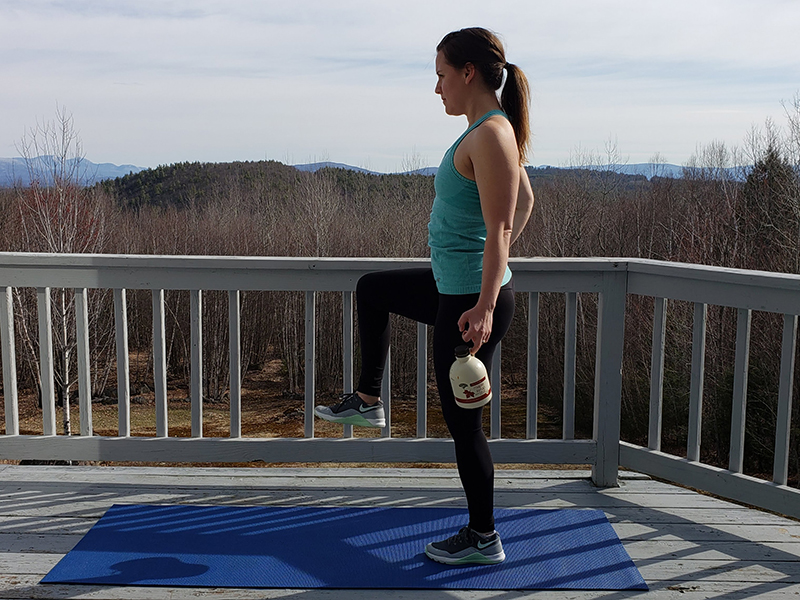
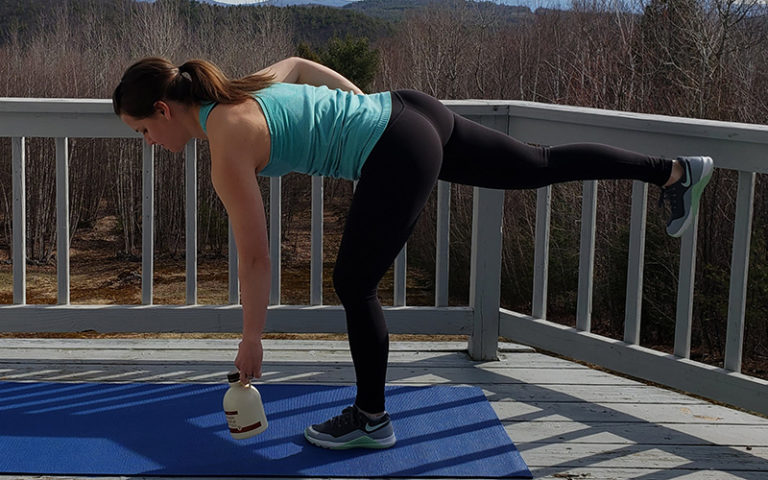
Muscles: back, butt, hips
Balance on your left leg while holding a fixed weight (free weight or gallon jug) in your left hand. Keep your left knee slightly bent and your back straight while leaning forward on the left hip. While you’re leaning forward, straighten your right leg and point the right toes to help stay balanced. Keep your arm straight so the weighted dumbbell or jug is lowering directly in front of your left leg. Push your left foot into the floor, pull back on your left knee, and lower your right leg to stand up, keeping your grip on the dumbbell. Pause in a balanced position before performing the next repetition.
Reps: 12 on each side
How it helps paddlers: The legs and hip muscles act to stabilize the entire body while paddling. Acting as synergists along with the core muscles, this balance exercise will help prepare the body for maneuvers like rolling and bracing.
4. Seated trunk rotation with extension
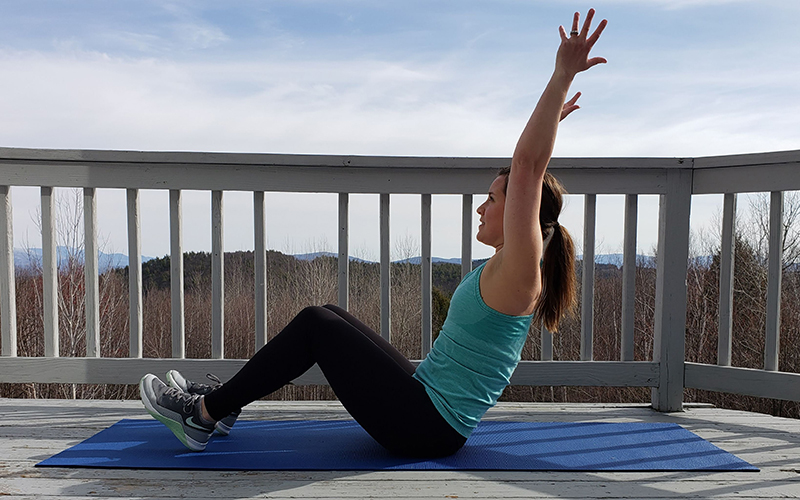
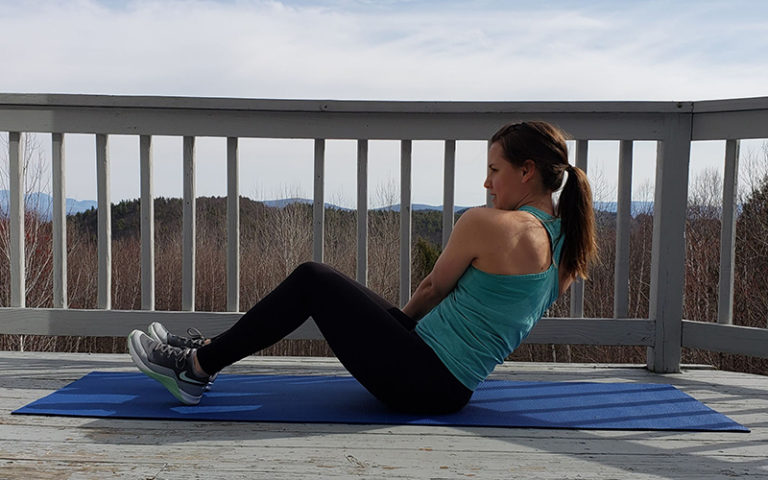
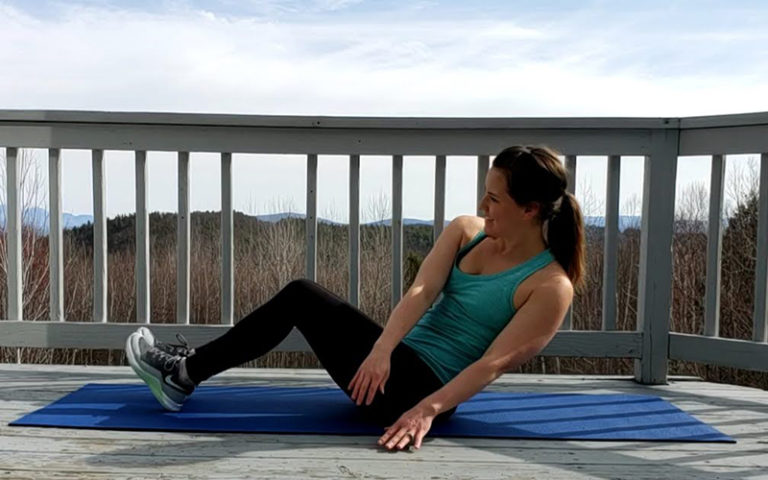
Muscles: core, upper back
Starting Position: Sit on a mat or floor with your knees bent, feet together, and heels on the floor, with your arms out in front of you. Lean back just an inch to engage your core.
Movement: Inhale, extending our arms up over your head, keeping your neck relaxed and shoulders down away from your ears. Exhale as you rotate your torso, reaching your hands toward the floor to the right side. Inhale as you return your arms back straight up over your head. Exhale and rotate your torso, reaching your hands toward the floor to the left side.
As your conditioning improves, modify your starting position by leaning back halfway to the floor while keeping your knees bent and heels on the floor. Keep your core and abdominal muscles engaged to prevent any arching in your low back during the exercise. Progress this movement by lifting one or both heels off the floor for a greater challenge.
Equipment: Mat
Modification: Use a weighted object like a ball or free weight
Reps: 20
How it helps paddlers: This exercise mimics the power source of the paddling motion that comes from the rotation of the torso driven by the abs and obliques while also building range of motion in the shoulders, chest and upper back.
5. Tricep dips
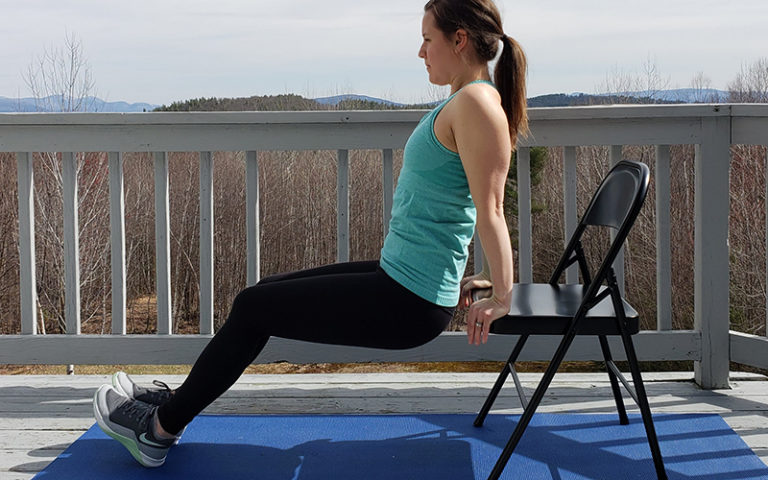
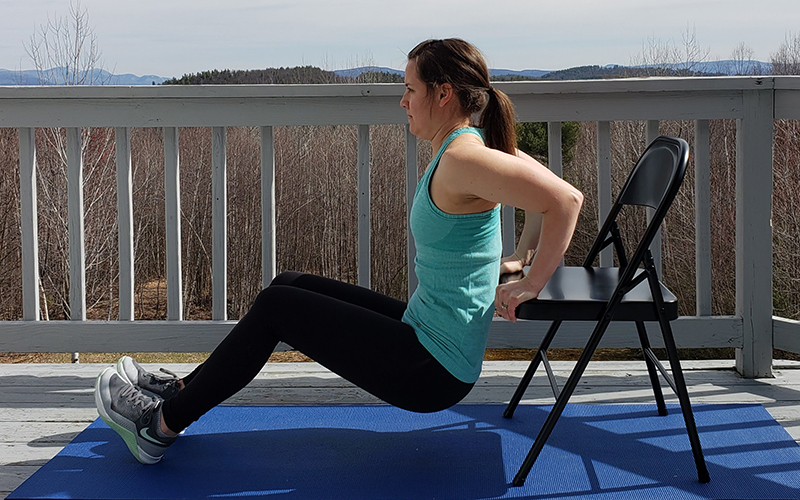
Muscles: upper body
Position your hands shoulder-width apart on a secured bench or stable chair. Slide your butt off the front of the seat with your legs extended out in front of you. Straighten your arms, keeping a little bend in your elbows to keep tension on your triceps and off your elbow joints. Slowly bend your elbows to lower your body toward the floor until your elbows are at about a 90-degree angle. Be sure to keep your back close to the seat. Once you reach the bottom of the movement, press down into the bench to straighten your elbows, returning to the starting position. This completes one rep. Keep your shoulders down as you lower and raise your body. You can bend your legs to modify this exercise.
Equipment needed: Sturdy chair or step
Reps: 15 to 20
How it helps paddlers: This is an easy at-home exercise that can help build muscular endurance in the back of the arms.
6. Supine lat pull over
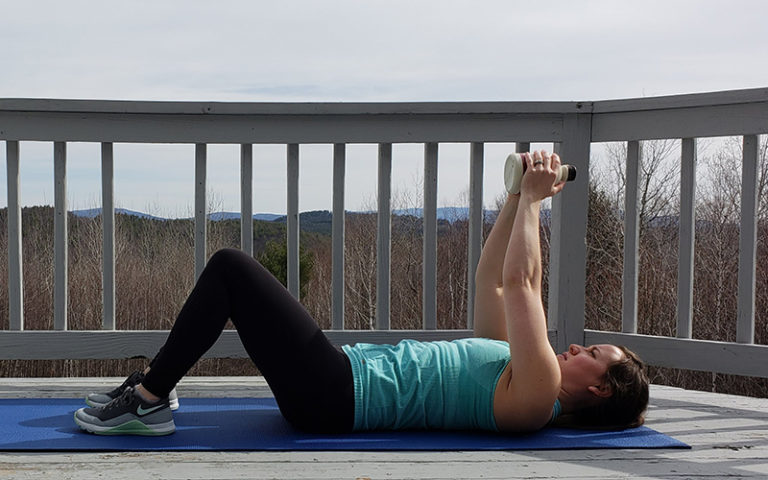
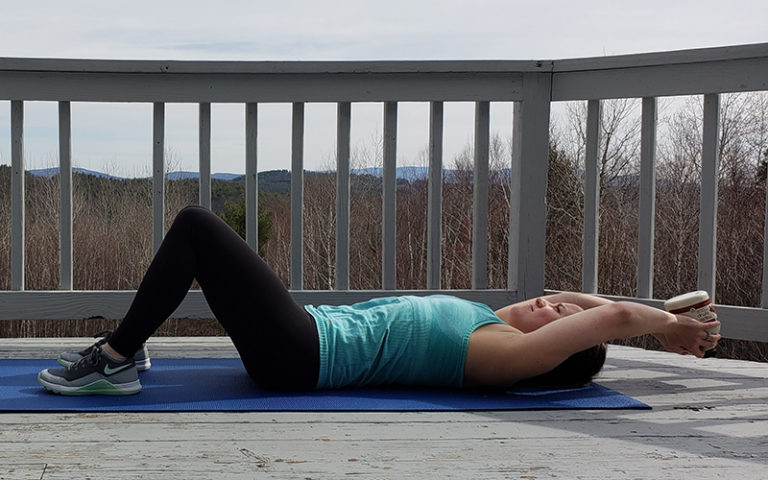
Muscles: upper back, shoulders, triceps, core
Lying back on a bench, end of the bed, or floor holding a fixed weight over your chest with both hands, fully extending the arms with a slight micro-bend in the elbows. Keep your palms up and your fingers pointing away from your head, arms fulling extend, and your core engaged, slowly bring the weight over your head towards the floor keeping the arms straight feeling a gentle stretch. Then slowly return to the starting position, bringing the weight back up over your chest.
Reps: 15 to 20
How it helps paddlers: This is a great way to target the upper back muscles at home if you don’t have access to a pullup bar, bands or a lat pulldown bar. This exercise helps stabilize the shoulders while building strength and length in the key muscles of a paddle stroke.
7. Bird Dog
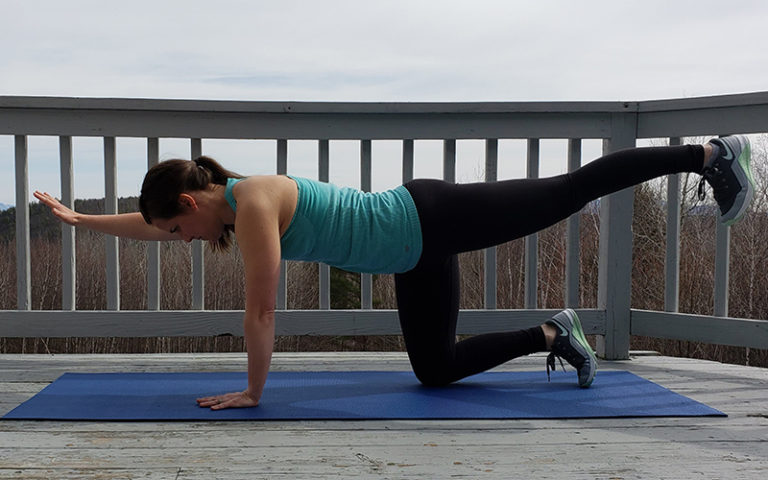
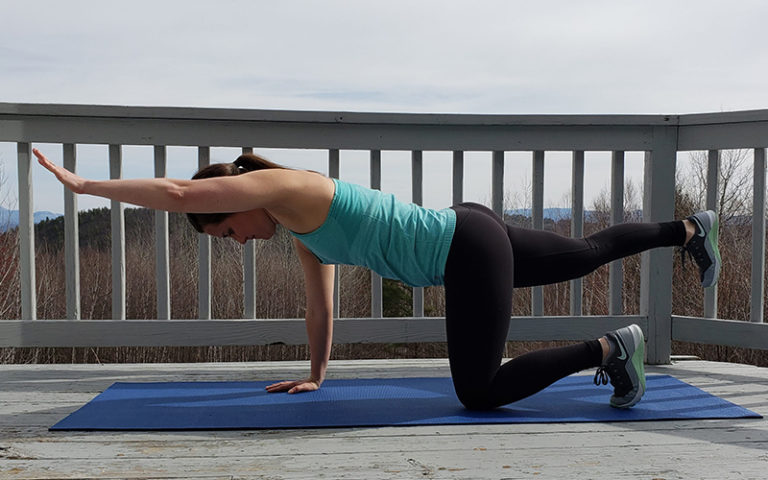
Muscles: back, shoulders, hips
Starting Position: Begin on all fours, fingers spread wide, shoulders stacked over your wrists and hips stacked over the knees. Inhale, lifting the right arm up while lifting the opposite leg backwards and flexing the foot. The hips should remain parallel to the floor throughout movement (avoiding rotation), engaging the core. (visualize tucking your belly button to your spine) Your goal is to keep both your hips and shoulders (avoid tilting) parallel to the floor. Only raise the limbs to heights where the low back position can be maintained through the combined actions of the core and abdominal muscles.
Equipment needed: Mat
Reps: 20
Modification: Try to balance something on your low back to help limit rotation in the hips
How it helps paddlers: This is an excellent exercise to train the body to stabilize the low back during upper and lower extremity movement.
Cool Down:
Extended mountain with chest expansion
Standing tall, inhale as you reach your arms up over your head, then exhale as you pull your elbows backward and down toward your sides to open your chest and flex your lats. Inhale, returning to extended mountain. Repeat 10 times.
Eagle arms
Stretch your arms straight forward, parallel to the floor, and spread your scapulas wide across the back of your torso. Cross your arms in front of your torso so that the right arm is above the left, then bend your elbows. Snug the right elbow into the crook of the left and raise the forearms perpendicular to the floor. The backs of your hands should be facing each other. Press the right hand to the right and the left hand to the left, so that the palms are now facing each other. The thumb of your right hand should pass in front of the little finger of your left. Now press the palms together (as much as is possible for you), lift your elbows up, and stretch your fingers toward the ceiling. Hold for 30 to 60 seconds then repeat with the right arm below the left.
Assisted hamstring stretch
Lie on your back and place a strap or towel around your foot. Hold the ends of the towel and use it to gently lift your leg up. Keep your knee as straight as you can and hold the stretched position for at least 30 to 90 seconds.
